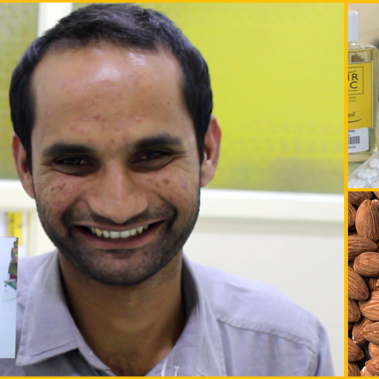Begin your transformation today by taking an appointment with our trichology expert. Your hair will thank you for it.
WHAT IS TRICHOLOGY
WHAT IS TRICHOLOGY
A qualified trichologist is someone who has successfully completed the trichology educational programme of the Institute of Trichology , London, England. The programme’s subject matter includes anatomy and physiology of the skin and hair, anatomy and physiology of the systems of the body, chemistry, microscopy. nutrition, hair and scalp maladies, and electro-therapy.
The first step in a consultation consists of diagnosing the exact nature of the problem. This is when their knowledge and experience is most called upon. Deeper analysis of the hair or skin may be necessary to help the trichologist determine the cause of the problem and the best way to treat it. Once the cause is established, the trichologist will decide:
If your problem requires treatment and, if so, what treatment would be most beneficial.
- If your problem is such that referral to a medical doctor is necessary.
- If surgical procedures are required, your trichologist will advise you on the best and most effective methods available.
Trichologists are trained to deal with conditions such as: Alopecia Areata, Totalis & Universalis, Diffused Hair Loss, Male – and Female Pattern Baldness, Telogen Effluvium, Seborrhoeic Dermatitis, Scalp Eczema & Psoriasis, Seborrhoea, Scalp Itching, Hair Breakage & Damage.
HAIR STRUCTURE & GROWTH CYCLE
There are basically 3 stages that each hair follicle has to go through around 20 times in your life.
The ANAGEN Phase:
This is the first phase of your hair growth cycle which is also known as the growing phase. At any one time, 80 -90 percent of the hair follicles on your scalp are in the ANAGEN phase. During this period:
- Your hair grows continuously
- The growth will continue for 3 to 7 years
- Growth is at the rate of half an inch a month
- The hair bulb produces your hair pigment
- Blood supply provides nutrients and minerals to your hair
- Hair looks thick and nourished
The CATAGEN Phase:
After the ANAGEN phase, your hair will go into a brief transitional phase before going to rest. This short phase is known as the CATAGEN phase and it lasts for 2 to 4 weeks. During this time:
- Your hair detaches from the blood supply
- The detached follicle slowly shrinks to about 1/6 its size
- The hair bulb stops producing the colour pigment
- The bulb is pushed upwards towards the surface by the new hair being formed
- At any given time, approximately 2 – 3 % of the hair on your scalp are in this phase
The TELOGEN Phase:
This is the final phase of your hair growth cycle. It is also known as the resting phase where your hair follicles will slowly fall off to be replaced by a new hair. Around 10 – 15 % of the hair on your scalp is in the TELOGEN phase.
- 50 – 100 hairs shed daily
- This period lasts for 3 months before the hair falls out
- The hair follicles become weak and thin and you can easily pull them out
- New hair follicles emerge once the hair falls
NUTRITION ADVICE
For men, the balding process can be slowed down by adopting a low-fat diet. Male pattern baldness has been linked to increased testosterone levels during puberty. A high-fat, meat-based diet raises testosterone levels, and that may adversely affect hair follicles. Eating low-fat foods may not stop hair loss; but it might help slow it down. Anaemia is one of the most frequent causes of hair loss. Eat plenty of iron-rich foods, like liver (unless pregnant) and other organ meat, whole grain cereals, dark green leafy vegetables, eggs, dates and raisins.
The hair is comprised mostly of protein. To encourage hair growth, adhere to a diet rich in protein. A recommended diet for this purpose includes calf liver, brewer’s yeast, wheat germ, and two tablespoons of granulated lecithin. Along with protein, these foods are also high in B vitamins – an important nutrient for hair growth.
Studies have indicated that soy protein reinforces hair and stimulates its growth. Tofu and soy milk are good sources of soy protein. Other sources of protein are : low-fat cheese, eggs, fish, beans, brewer’s yeast and yogurt.
Another important nutrient for healthy hair is Silica. Organic silica added to Shampoo is believed to prevent baldness, simulate healthier hair growth and endow it with shine, lustre and strength. Silica can be applied externally to re-grow already lost hair.
Silica is found in the outer coverings of potatoes, green and red peppers and cucumbers. Bean sprouts are also high in silica..
Vitamin C improves the absorption of iron. Include a good serving of fruits and vegetables in your diet.
Vitamin E is important for healthy hair growth. Eat avocados, nuts, seeds, and olive oil on a regular basis.
If hair loss is due to thyroid dysfunction, eat more foods rich in vitamin A and iodine. Vegetables such as carrots or spinach. Unrefined, cold-pressed seed oils such as flax, walnut or pumpkin seed and sea salt. Take turnips, cabbage, mustard, soy beans, peanuts, pine nuts and millet if there is a deficiency of iodine.
Caution: Excessive intake of Vitamin A can cause hair loss.
Make an Appointment!
Misson & Vision
Our Mission
To bring happiness and confidence to people through effective treatment
Our Vision
Create and build up healthy hair lifestyle
Our Business Principle
Our experience shows that if we serve our customers well, our own success will follow






